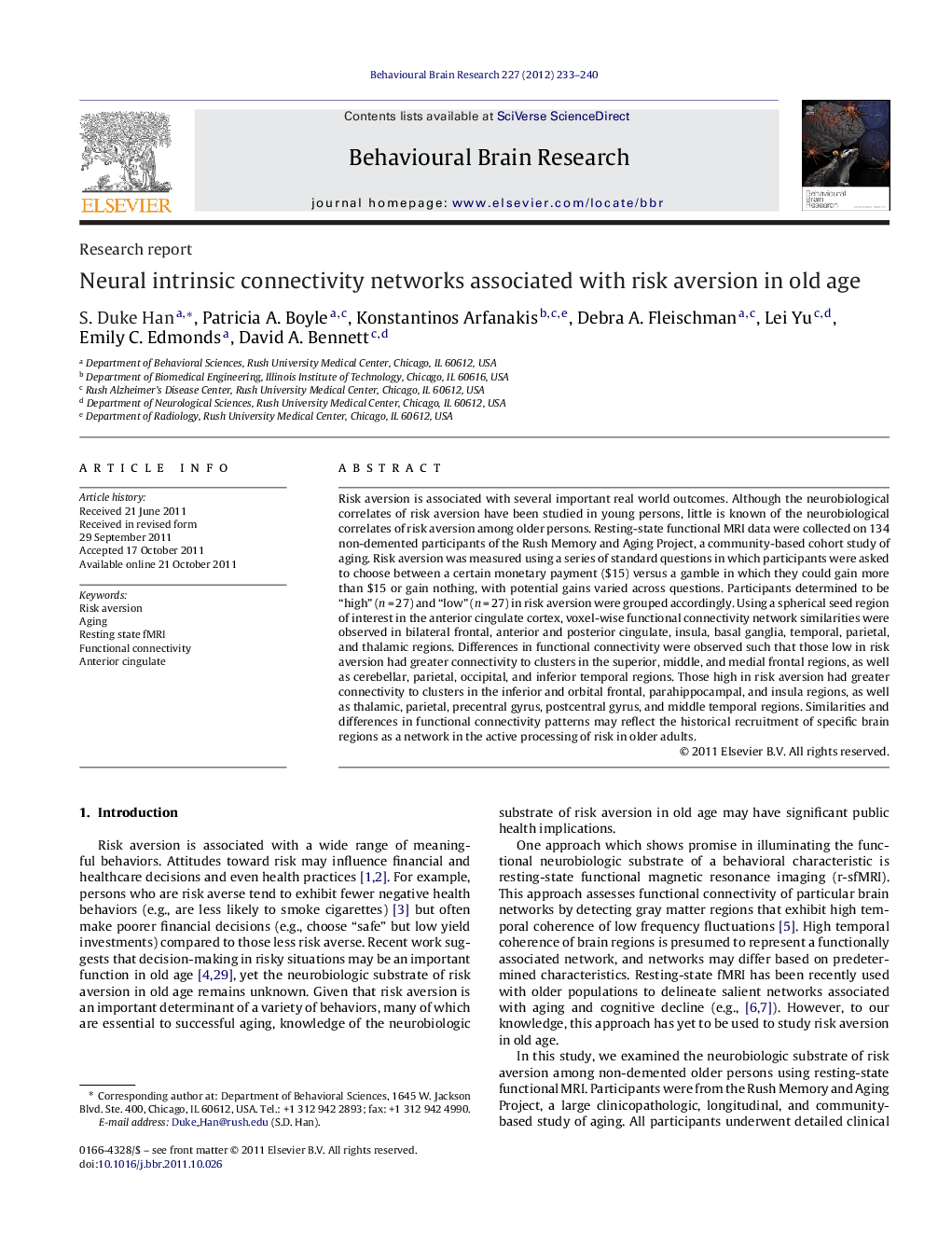| کد مقاله | کد نشریه | سال انتشار | مقاله انگلیسی | نسخه تمام متن |
|---|---|---|---|---|
| 4313406 | 1289995 | 2012 | 8 صفحه PDF | دانلود رایگان |

Risk aversion is associated with several important real world outcomes. Although the neurobiological correlates of risk aversion have been studied in young persons, little is known of the neurobiological correlates of risk aversion among older persons. Resting-state functional MRI data were collected on 134 non-demented participants of the Rush Memory and Aging Project, a community-based cohort study of aging. Risk aversion was measured using a series of standard questions in which participants were asked to choose between a certain monetary payment ($15) versus a gamble in which they could gain more than $15 or gain nothing, with potential gains varied across questions. Participants determined to be “high” (n = 27) and “low” (n = 27) in risk aversion were grouped accordingly. Using a spherical seed region of interest in the anterior cingulate cortex, voxel-wise functional connectivity network similarities were observed in bilateral frontal, anterior and posterior cingulate, insula, basal ganglia, temporal, parietal, and thalamic regions. Differences in functional connectivity were observed such that those low in risk aversion had greater connectivity to clusters in the superior, middle, and medial frontal regions, as well as cerebellar, parietal, occipital, and inferior temporal regions. Those high in risk aversion had greater connectivity to clusters in the inferior and orbital frontal, parahippocampal, and insula regions, as well as thalamic, parietal, precentral gyrus, postcentral gyrus, and middle temporal regions. Similarities and differences in functional connectivity patterns may reflect the historical recruitment of specific brain regions as a network in the active processing of risk in older adults.
► We examined neural correlates of risk aversion in old age using resting-state fMRI.
► Risk aversion status was determined using neuroeconomic approaches.
► Network similarities and differences were associated with high/low risk aversion.
► High risk averse show greater functional connectivity of the orbitofrontal cortex.
► Low risk averse show greater connectivity of the dorsolateral prefrontal cortex.
Journal: Behavioural Brain Research - Volume 227, Issue 1, 1 February 2012, Pages 233–240